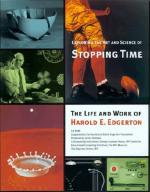|
This section contains 354 words (approx. 2 pages at 300 words per page) |
World of Invention on Harold E. Edgerton
Harold Edgerton was born in Fremont, Nebraska on April 6, 1903. Although his family moved to Washington, D.C., due to his father's career with the federal government, the family eventually returned to their native Nebraska. After earning an electrical engineering degree from the University of Nebraska, Edgerton worked for General Electric in Schenectady, New York, then entered the Massachusetts Institute of Technology (MIT). At MIT Edgerton earned both his masters and doctorate degrees in electrical engineering. He received a faculty appointment at MIT and eventually was awarded the highest rank at the university, that of Institute Professor. While conducting a study of power generators at MIT, Edgerton noticed that flashes of light from mercury rectifiers made a generator's rotors appear to stand still. He recognized the opportunity to invent a lamp that could "freeze" motion with rapid pulses of intense light. By 1931, he had described such a device in the journal Electrical Engineering. This stroboscope was the first high-powered reusable electronic flash. Combined with a camera, it was able to photograph a particular microsecond of history. Not only could the stroboscopic flash make an object appear to stand "still," but objects in cyclic motion could be made to appear slower, in reverse, or simply juggled by adjusting the speed of the stroboscopic light. Though taking a "still" picture of a rapidly moving object had been accomplished by William Henry Fox Talbot in 1851 and had been improved upon by many others, Edgerton was not only the first to substitute a control circuit for a tube or lamp, but the first to make high-speed flash photography practical. With his two students, Kenneth Germeshausen and Herbert E. Grier, Edgerton continued to develop other appliances and circuits for stroboscopy. Around 1940, Edgerton and Germeshausen were invited to take their experimental stroboscopic high-speed movie camera to the MGM studio. They produced a "short" entitled Quicker Than a Wink. It received an Oscar for the best short film. In later years, Edgerton, who came to be known as "Papa Flash," took up oceanographic photography. He eventually made ten voyages on Jacques Cousteau's research vessel, Calypso, before his death on January 4, 1990.
|
This section contains 354 words (approx. 2 pages at 300 words per page) |


